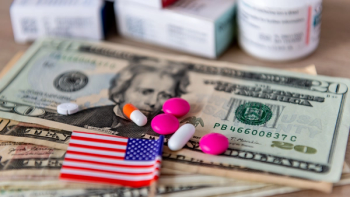
Nano Tech: Big Stakes in Small Things
New and emerging technologies are noteworthy not simply for the excellent science behind them but also for the way they expose those raw edges of the industry’s business model. In biopharma today, disruptive changes to the model are being driven by two forces.
William Looney
New and emerging technologies are noteworthy not simply for the excellent science behind them but also for the way they expose those raw edges of the industry’s business model. In biopharma today, disruptive changes to the model are being driven by two forces. The first is advances in basic science. The second is the accompanying - and often little noticed - process improvements that allow the new science to be adapted for patient use. It’s very simple: science is moving the agenda in all the areas that matter to Big Pharma - from regulation to finance to reputation.
This point was underscored at a November 21 New York Academy of Sciences conference on the business and regulatory issues posed by nanomedicines. These are drugs, devices and research tools that apply the principles of nanotechnology – “the science of the small” – to diagnose and treat illnesses through the materials-based manipulation of human biological structures and systems. So-called “nanoparticles” no larger than a single molecule can be designed to improve a drug’s pharmacological and therapeutic properties, delivering target doses with cell-like precision while minimizing toxicity, side effects and poor absorption in the body. An example is drugs now being tested for cancer that use nanoparticles to “cook” specific tumor cells in a way that mimics and magnifies the potency of conventional radiation therapy, at less harm to healthy tissue.
While nanomedicine may offer patients a better clinical outcome than regular drug therapy, its future depends on resolving issues that the familiar big Pharma business model has been slow to address. These issues include:
Creating a new language of collaboration. A truly novel mechanism for drug delivery, nanomedicine depends on interactions among multiple partners, some of whom, like physicists, have had limited contacts with traditional institutions of medical research. US government have been highly effective as intermediaries, but the commercialization of nanomedicines requires that cooperation across disciplines be replicated more broadly within the private sector and in academia.
Accommodating – and managing – additional degrees of risk. The complex, million machine-like “nanoparticles” that differentiate nanomedicines from conventional drugs can pose health and safety risks. There are also potential environmental impacts as well as data sharing, privacy and ethical concerns. Internally, most companies are not organized to make definitive assessments of these risks and incorporate them with normal clinical evaluations at the necessary early stage of testing. Nor for that matter I s the regulatory community.
Shaping the future regulatory space. Definitions of what nanomedicines actually are – drugs, devices, diagnostics or research tools – vary from one jurisdiction to the next, making this field a “black hole” for regulators. It is also out of synch with the current regulatory paradigm founded on legislation written in the last century, whereas nanomedicines did not even exist as a drug nomenclature until a decade ago. Numerous speakers at the conference noted the importance of regulation that is sensitive to the differences we make between medicines – where a strict calculation must be made between risk and benefit – and materials, which allow for a broader approach. Because nanomedicines are often a combination of the two, a robust regulatory regime will have to be clear about the differentiation or risk accentuating the uncertainty – and thus the cost – of R&D.
It also suggests industry must advocate for more regulatory harmonization to guide future developments in this fast-changing area of science, perhaps starting with rules for joint scientific advice from the leading US, Europe and and Japanese agencies. On January 17, the EMA and Japan’s MHLW set their own precedent with a joint reflection paper [EMA CHMP/13099/2013] outlining the approach the agencies might take in evaluating a nanomedicine anti-tumor agent.
Raising the bar on manufacturing. For nanomedicines, process dictates the product. Perhaps the greatest obstacle to commercialization is finding safe, scalable, cost-efficient ways to make the medicine, recognizing that in nanotechnology, even more than biologics, the smallest variation in material composition can render the drug and its delivery system useless. While small innovators in nanomedicines face significant financing problems, conferees concluded that so far big Pharma is not lining up to fill the gap. The drug majors still seem fixated on that limited risk, small molecule model, where all the cost was upfront in R&D, with manufacturing done for pennies on the dollar.
Big Pharma was strangely absent from this well-attended Academy event, with only Teva and Celgene showing the colors. Perhaps it’s time to heed the message from nano world: change the way you do business or the science will make you small.
Newsletter
Lead with insight with the Pharmaceutical Executive newsletter, featuring strategic analysis, leadership trends, and market intelligence for biopharma decision-makers.





